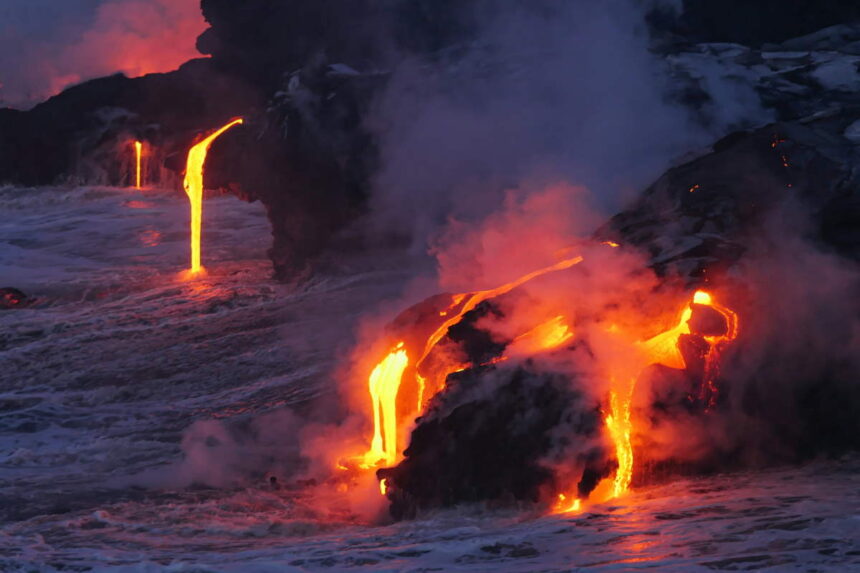The parking lot of Iceland’s famous Blue Lagoon is now filled with lava following the latest eruption on the Reykjanes peninsula in Southwestern Iceland. Only a few streetlamps remain standing as mute witnesses of what used to be a busy tourist center that has now been overcome by molten rock.
Lava Bursts Above Infrastructure
This eruption, which started on Sundhnukar earlier this week, has already had quite a great effect on the Blue Lagoon and its surroundings. It had submerged the large main parking area designed to hold about 350 cars and buses. A sign pointing visitors to the car park also got swallowed up and showed how far the lava had reached.
Efforts are continuing to determine access to the Blue Lagoon. According to Helga Árnadóttir, the operations manager for the resort, when the volcanic activity subsides, the situation will need to be reassessed. There is also alternative parking, but the long-term feasibility of those options is yet to be determined.
Reykjanes Eruption: A Slow Yet Spectacular Threat
It is the latest in a series of eruptions resulting from volcanic activity on Iceland’s Reykjanes peninsula, a region recognized with “rift activity” volcanoes. Such types of eruptions, which include slow-moving basaltic lava flows, are less explosive yet can have extensive impacts on infrastructure.
The fissure opened up during the eruption is nearly 1.8 miles long. This incident marks the seventh volcanic eruption this year and proves just how erratic this region is. According to the Icelandic Meteorological Office, the current eruption is relatively smaller compared to the August eruption but still effective.
Iceland’s western volcanic zone, including the Reykjanes peninsula, has seen increased activity in recent years. While eruptions in this region are typically “tourist-friendly,” allowing safe viewing, the proximity of lava flows to populated areas poses risks.
Past eruptions, such as the highly destructive eruption in 1783 at Laki, have irreversibly altered the course of Icelandic history with widespread destruction and loss of life. While modern eruptions, with advances in monitoring and emergency management, remain far more controlled, the damage to critical infrastructure serves to illustrate many of the ongoing challenges of life in a volcanically active region.
With the lava still flowing, emergency officials are monitoring gas emissions to make sure they waft harmlessly out to sea. The area around Grindavik has been evacuated, and drone footage shows rivers of lava moving across the landscape as a stark visual of nature’s relentless power.
The eruption serves as a reminder that Iceland sits at the curious juncture of the Mid-Atlantic Ridge, where tectonic activity creates beauty and great challenges for those living and working on the island. For now, with recovery efforts likely to take months or even years, the future of the Blue Lagoon remains in limbo.




